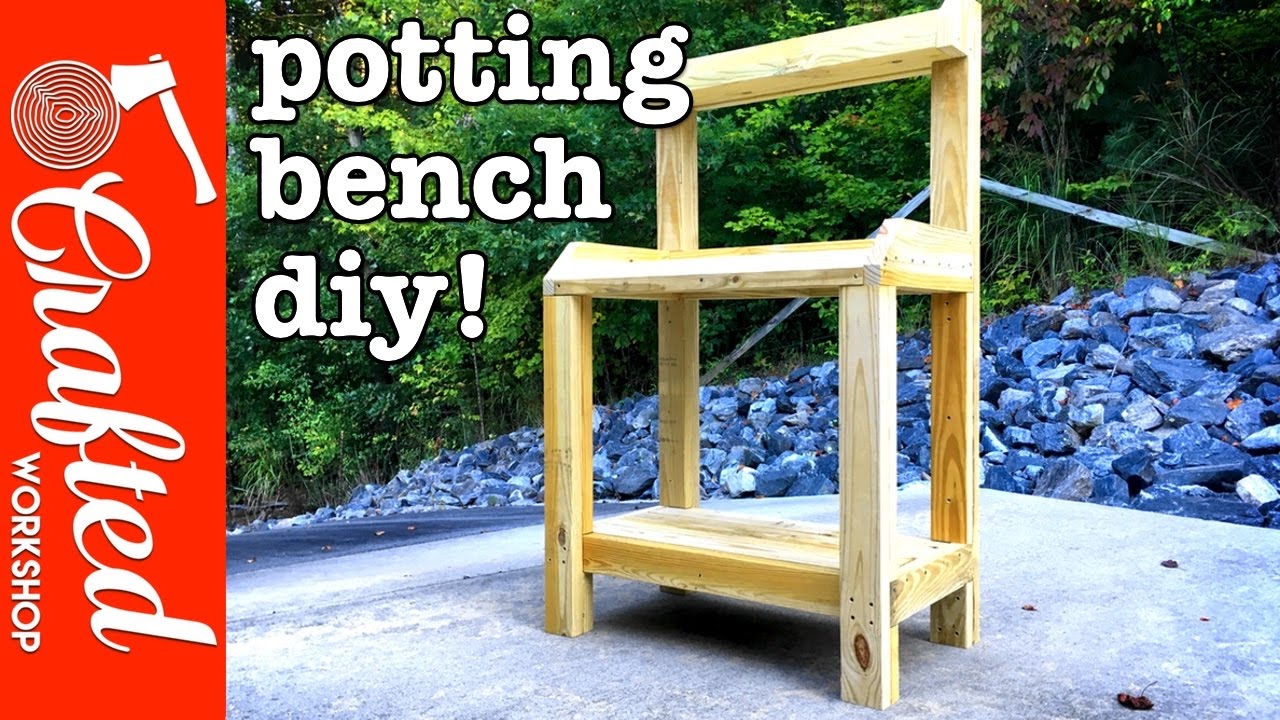Hey there, everyone! Welcome back to another Crafted Workshop video. In this installment, Johnny Brook is going to show you how to build a simple DIY garden potting bench. With just two tools – a saw and a drill – you can create this project that is perfect for any beginner woodworker. The materials you’ll need include pressure-treated pine, two-by-sixes, two-by-fours, and two-by-twos, along with deck screws and wood glue. The build article provides a detailed cutlist to help you break down the materials, and Johnny offers some helpful tips along the way to make the construction process more efficient. So, get ready to add a practical and stylish potting bench to your garden with this easy DIY project from Crafted Workshop!
Materials and Tools
Tools Used Building The DIY Potting Bench
To build the DIY potting bench, you will need the following tools:
- Miter saw or circular saw
- Speed square
- Drill
- Jigsaw (optional)
Preparing the Materials
Gathering the necessary materials
Before starting the project, gather the following materials:
- Three 8-foot long 2x6s
- Seven 8-foot long 2x4s
- One 10-foot long 2×2
- One pound of 2.5-inch deck screws
- Wood glue

This image is property of i.ytimg.com.
Breaking down the materials according to the cut list
Once you have all the materials, break them down according to the cut list provided in the build article. This project requires a total of 40 pieces, so there will be a lot of cutting involved. A miter saw is a great choice for this task, but a circular saw and speed square can also be used if you don’t have a miter saw. Setting up a stop block is highly recommended, as there are many duplicate cuts in this build. A stop block will improve efficiency and ensure accurate cuts. Additionally, consider adding decorative miter cuts or rounding over the pieces for a nice aesthetic touch. Be careful not to cut too deep, as it may cause the front of your work surface to protrude above the miter or rounded edge. If this happens, a mitered cut at the table saw can fix the issue.
Cutting and Shaping
Using a miter saw or circular saw to make cuts
A miter saw or circular saw will be your main tools for making cuts. Follow the cut list and use these tools to accurately cut the materials to the required lengths.

This image is property of images.unsplash.com.
Using a stop block for efficiency
Setting up a stop block is highly recommended to improve efficiency. Since there are many duplicate cuts in this project, a stop block will save you time and ensure consistent measurements.
Optional decorative miter cuts or rounding over the pieces
To add a decorative touch to your potting bench, consider making miter cuts or rounding over the edges of the pieces. This step is optional but can enhance the overall look of the bench.
Assembling the Work Surface

This image is property of images.unsplash.com.
Attaching the work surface sides to the front using screws and glue
Start by attaching the work surface sides to the work surface front using two and a half inch deck screws and wood glue. Ensure that everything is squared up as you assemble it.
Adding the work surface cleats
Next, add the work surface cleats. These cleats support the boards that make up the work surface. Attach them securely to the frame.

This image is property of images.unsplash.com.
Attaching the work surface boards with screws and nails
Attach the work surface boards to the sides using screws. It’s recommended to space the boards roughly 1/8 of an inch apart to allow for expansion and contraction with the changing seasons. Use nails or screws to attach the boards to the sides and bottom of the cleats.
Assembling the Bottom Shelf
Following the same steps as the work surface assembly
Assemble the bottom shelf using the same steps as the work surface. This includes assembling the frame, adding the cleats, and attaching the boards.
Adding support blocks for the shelf
To provide additional support for the bottom shelf, attach support blocks to the front legs and back legs. Use glue and screws to secure them in place.
Attaching the legs to the bottom shelf
Attach the front legs first, followed by the back legs, to the bottom shelf using glue and screws. This step completes the assembly of the legs and bottom shelf.
Assembling the Legs and Middle Support Blocks
Attaching the middle support blocks to the legs
Attach the middle support blocks to the inside of the legs using glue and screws. These support blocks will provide a resting place for the work surface.
Placing the work surface assembly on top of the front legs and middle support blocks
Place the work surface assembly on top of the front legs and middle support blocks. Make sure everything is aligned properly.
Assembling the Top Shelf
Attaching the top shelf sides to the top shelf base
Attach the top shelf sides to the top shelf base using screws. Place a few screws on each end and secure them with glue.
Placing the top shelf on top of the upper support blocks
Place the top shelf on top of the upper support blocks. These blocks will provide support for the top shelf. Align the shelf properly before moving on to the next step.
Attaching the back of the top shelf
Attach the back of the top shelf by screwing it into the legs and shelf bottom. This will secure the top shelf in place.
Conclusion
Summary of the project
In conclusion, building a DIY potting bench is a relatively simple woodworking project that can be completed with just a few tools. By following the steps outlined in this article, you can create a functional and sturdy potting bench for your gardening needs.
Affordability and simplicity of the build
This project is relatively inexpensive, with the lumber costing around 80 bucks. It can be completed in an afternoon and is suitable for beginners in woodworking. All you need is a saw (such as a miter saw or circular saw) and a drill to get started.
Happy building!









